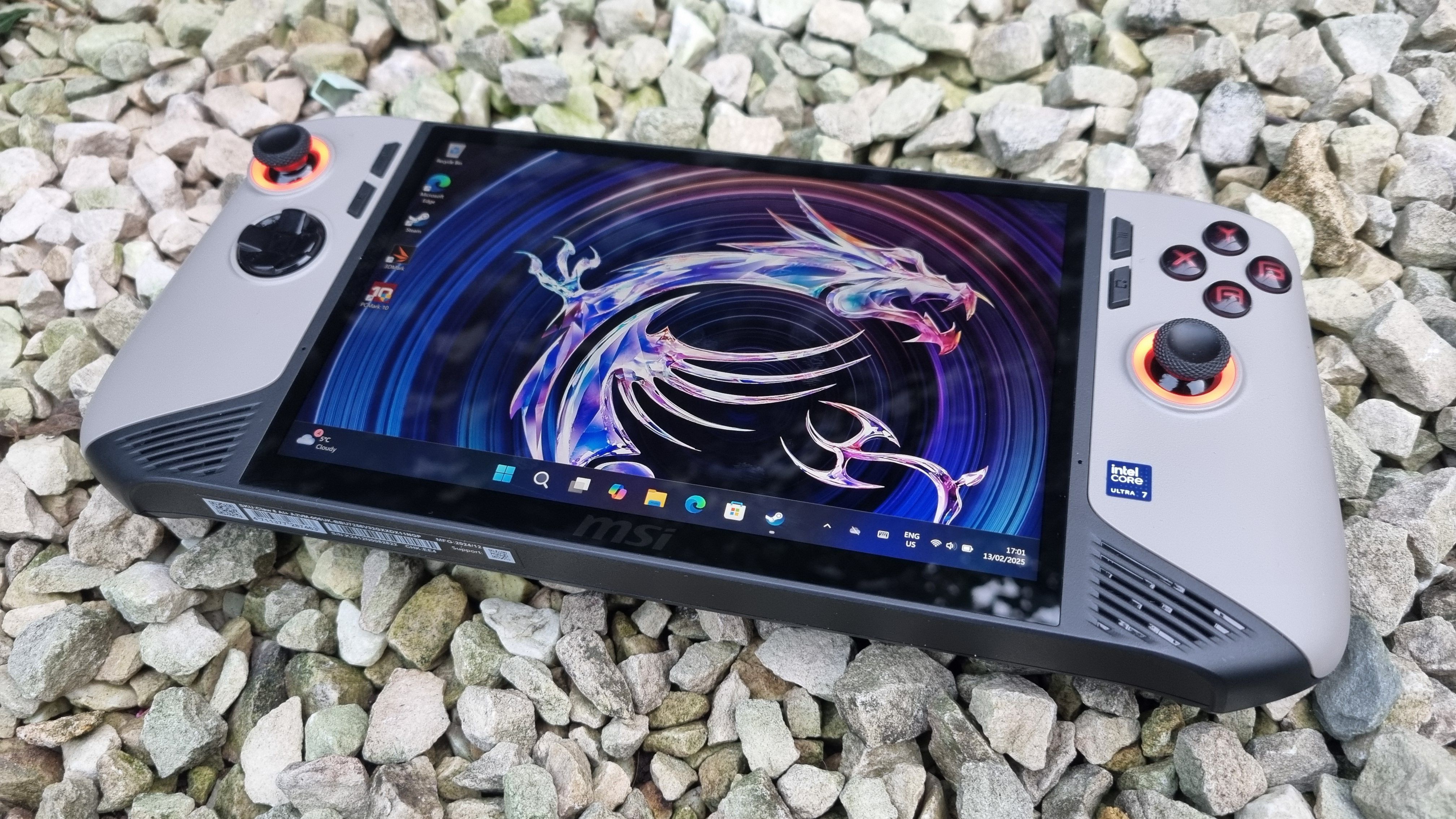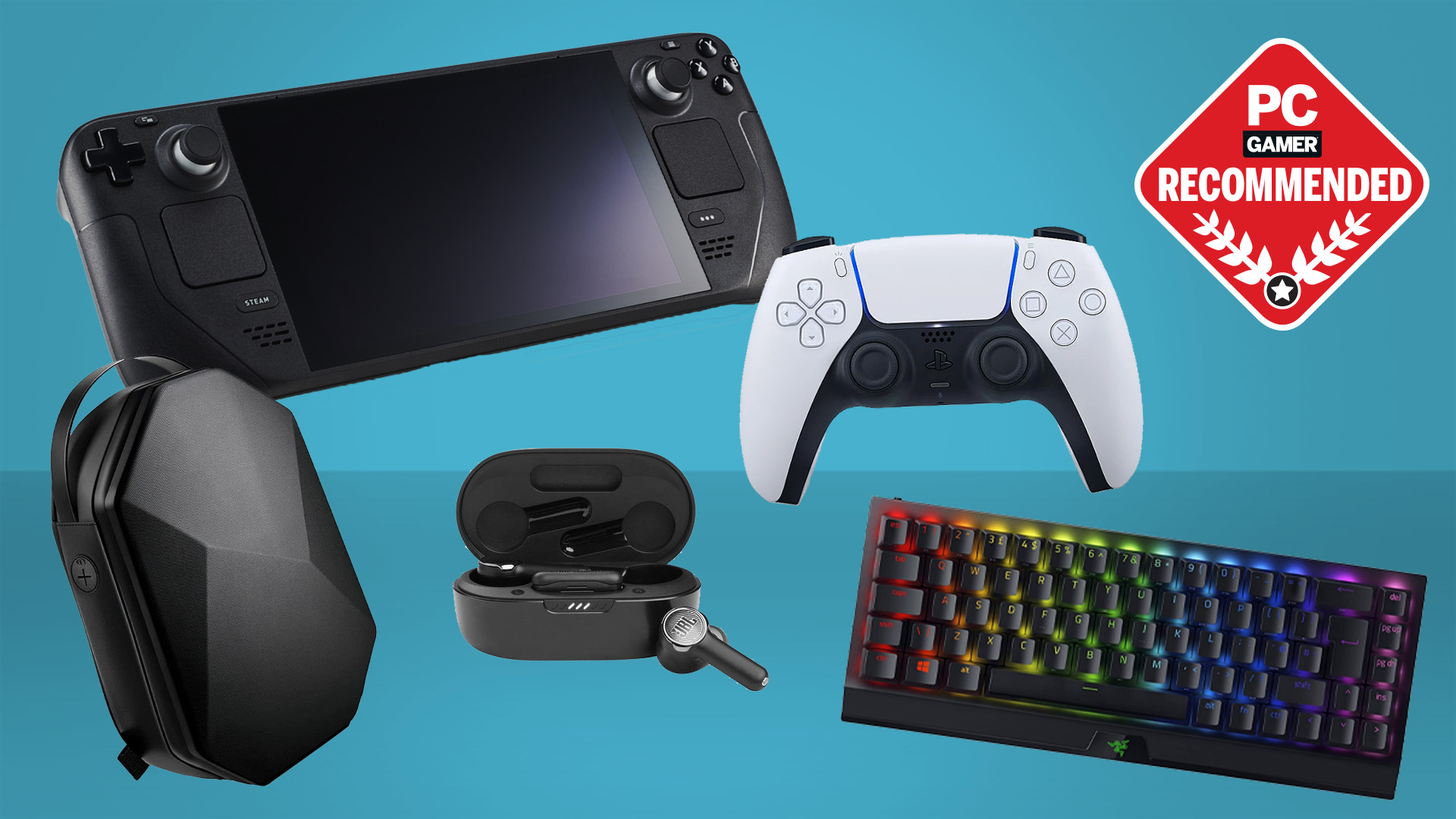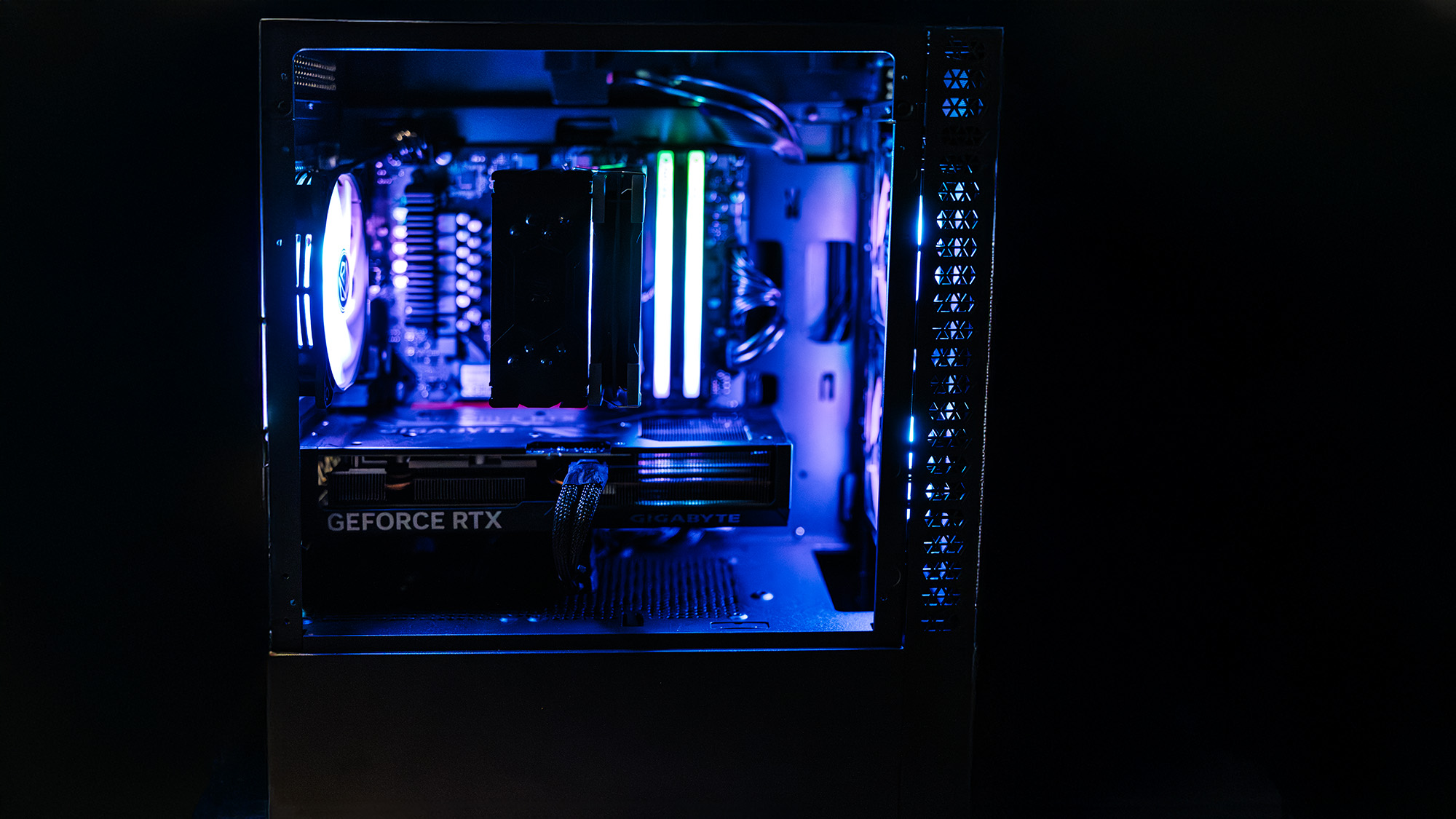Our Verdict
The Claw 8 AI+ might have the occasional wobble, but overall it's a handsome, solidly-built, and impressive handheld with a great screen and serious performance. It's quite the thing—and a massive improvement on its predecessor.
For
- Superb performance
- Large, vibrant screen
- Comfortable ergonomics
- Excellent battery life
Against
- MSI software has the occasional moment
- Competitors still feel slightly more premium
- Not the most portable
PC Gamer's got your back
Pour one out for the original MSI Claw. You can still find it for sale, but with a Meteor Lake Intel chip inside and a chassis design that felt a lot more like a prototype than you'd expect from a modern gaming handheld, it seemed doomed to obscurity from the start.
The MSI Claw 8 AI+, however, feels like a much more accomplished product right from the off. It's a substantial piece of kit, with a chonky chassis that immediately delivers a sense of weight and quality the second you get it in your hands. The Hall effect thumbsticks are well-placed, the triggers and shoulder buttons feel much improved, and overall it's a good-looking, desirable object to pull from the box. As it should be, for the fairly substantial price of $900/£899.
Sitting centre stage is an 8-inch IPS-type 1200p display, and it's noticeably vibrant from the moment you boot into Windows. While the Claw 8 AI+ is not the most portable of machines, everything external has a certain wow factor that the previous model was sorely missing—and that big screen sits proudly in the middle, begging you to dive in.
Inside there's plenty to be excited about, too. It comes equipped with the Intel Core Ultra 7 258V, a Lunar Lake chip that we've been anticipating in a handheld gaming PC for a long time.
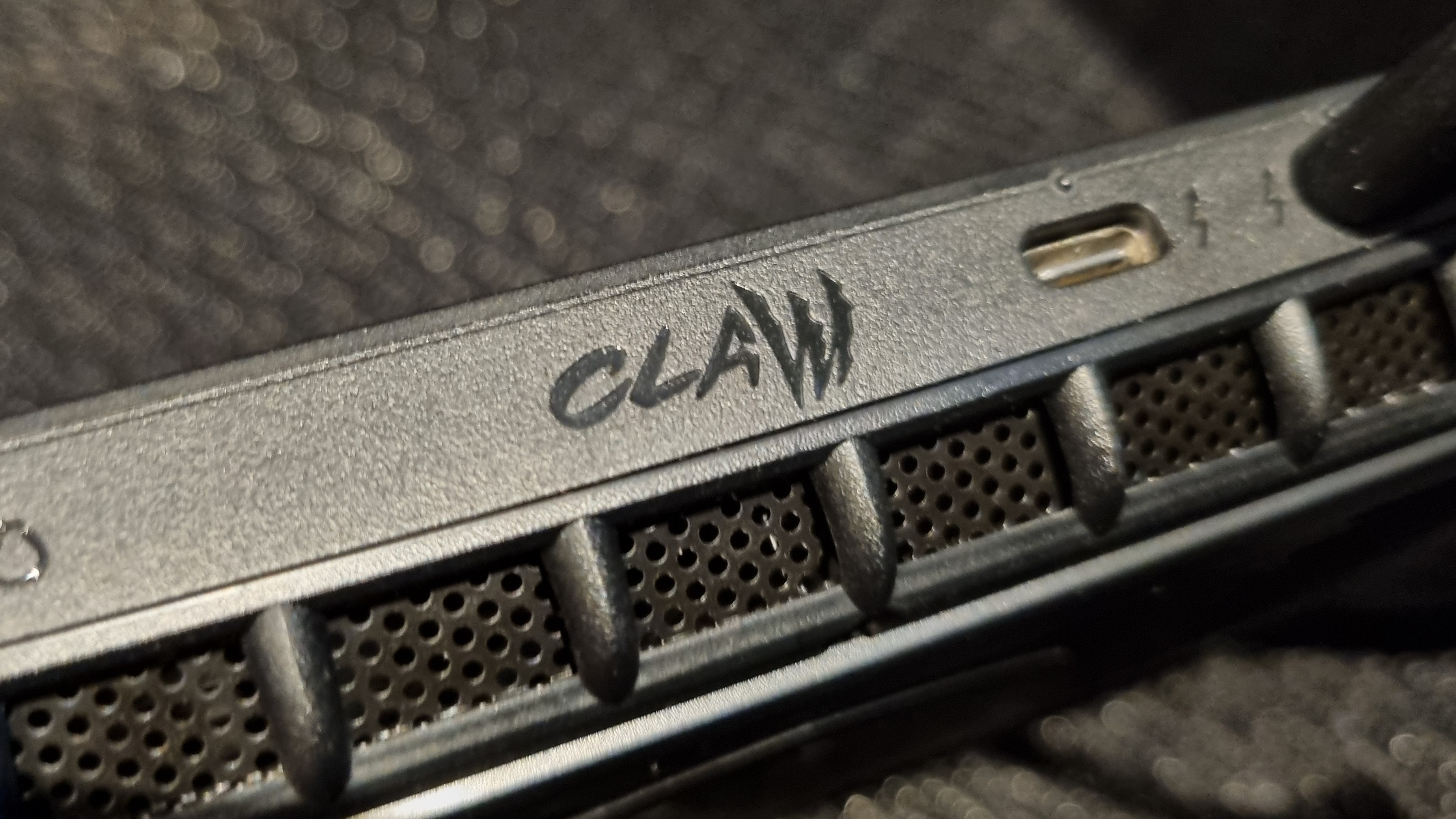
CPU: Intel Core Ultra 7 258V
Cores: 4x Performance, 4x Efficient
Threads: 8
GPU: Intel Arc 140V
Memory: 32 GB LPDDR5x-8533
Screen size: 8-inch
Native resolution: 1920 x 1200
Refresh rate: 120 Hz
Storage: 1 TB SSD
Battery: 80 Wh
I/O: 1x MicroSD card reader, 2x Thunderbolt 4 (Displayport/Power Delivery 3.0)
Dimensions: 299 x 126 x 24 mm
Weight: 795 g
Price: $900/£899
Intel had a rough 2024 when it came to desktop CPUs, but the Lunar Lake mobile chips stood out as perfect candidates for a portable gaming machine—thanks to excellent power efficiency and an improved, Battlemage-based Arc 140V iGPU, with eight Xe² cores and eight dedicated ray tracing units.
Not that smooth ray tracing performance was ever on the table here—it'll still be a long time before an iGPU will be capable of coping with all the settings turned up in Cyberpunk 2077 without slowing to a crawl. It's an impressive chip, though, and the Claw 8 AI+ is the first gaming handheld to make use of it.
So, this is a portable gaming machine with specs to impress. As a result I've pitted it against the Asus ROG Ally X, our current best handheld gaming PC, and the OneXPlayer OneXFly F1 Pro, an AMD Strix Point-equipped speed machine. The F1 Pro is the fastest handheld we've ever tested and retails for $1,339. That's $439 more than the Claw 8 AI+, for reference.
I've also thrown the Lenovo Legion Go into the mix, another big screen handheld with many virtues worth considering. So the big question is: Can the Claw 8 AI+ keep up with some of our top contenders?
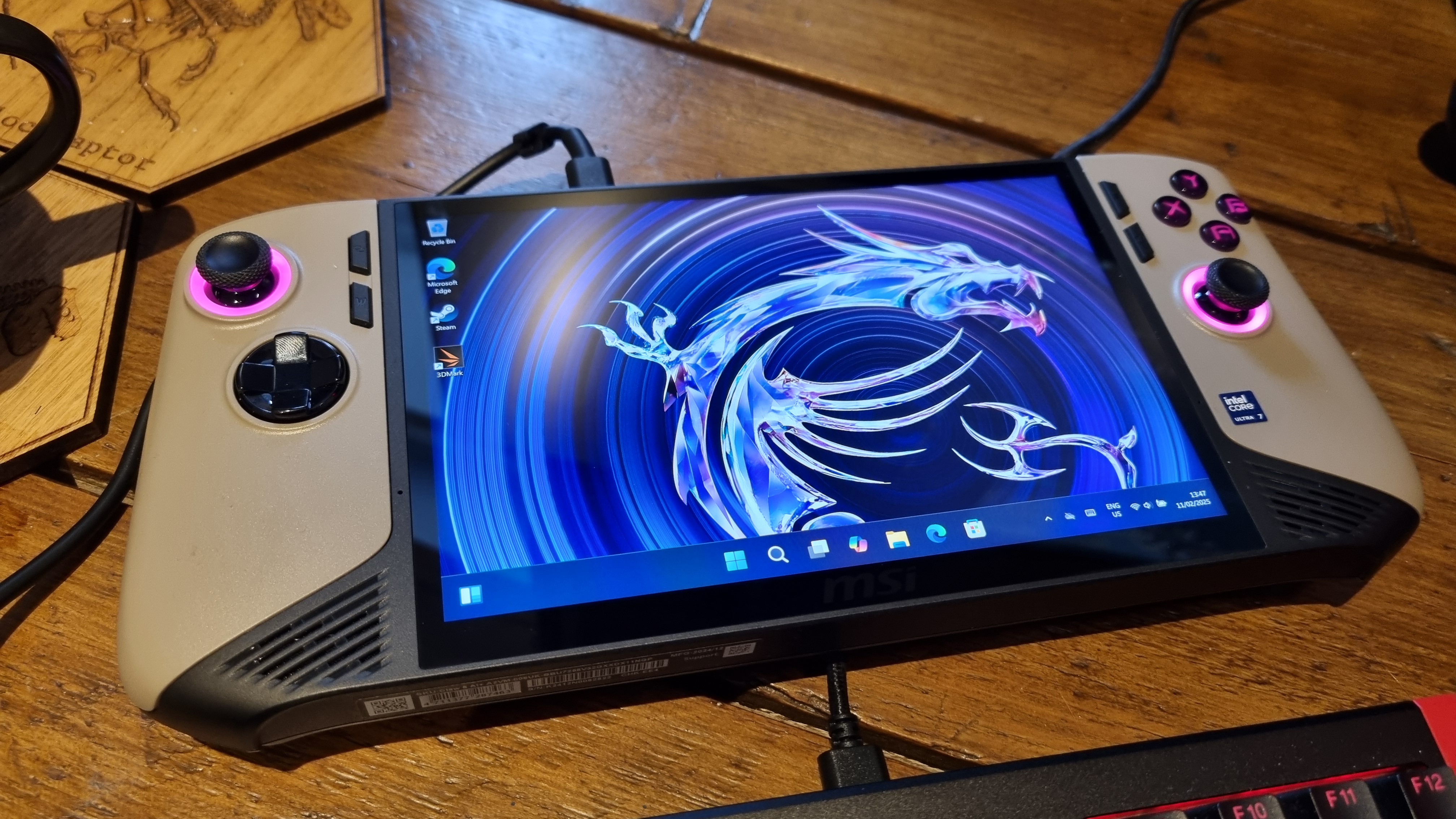
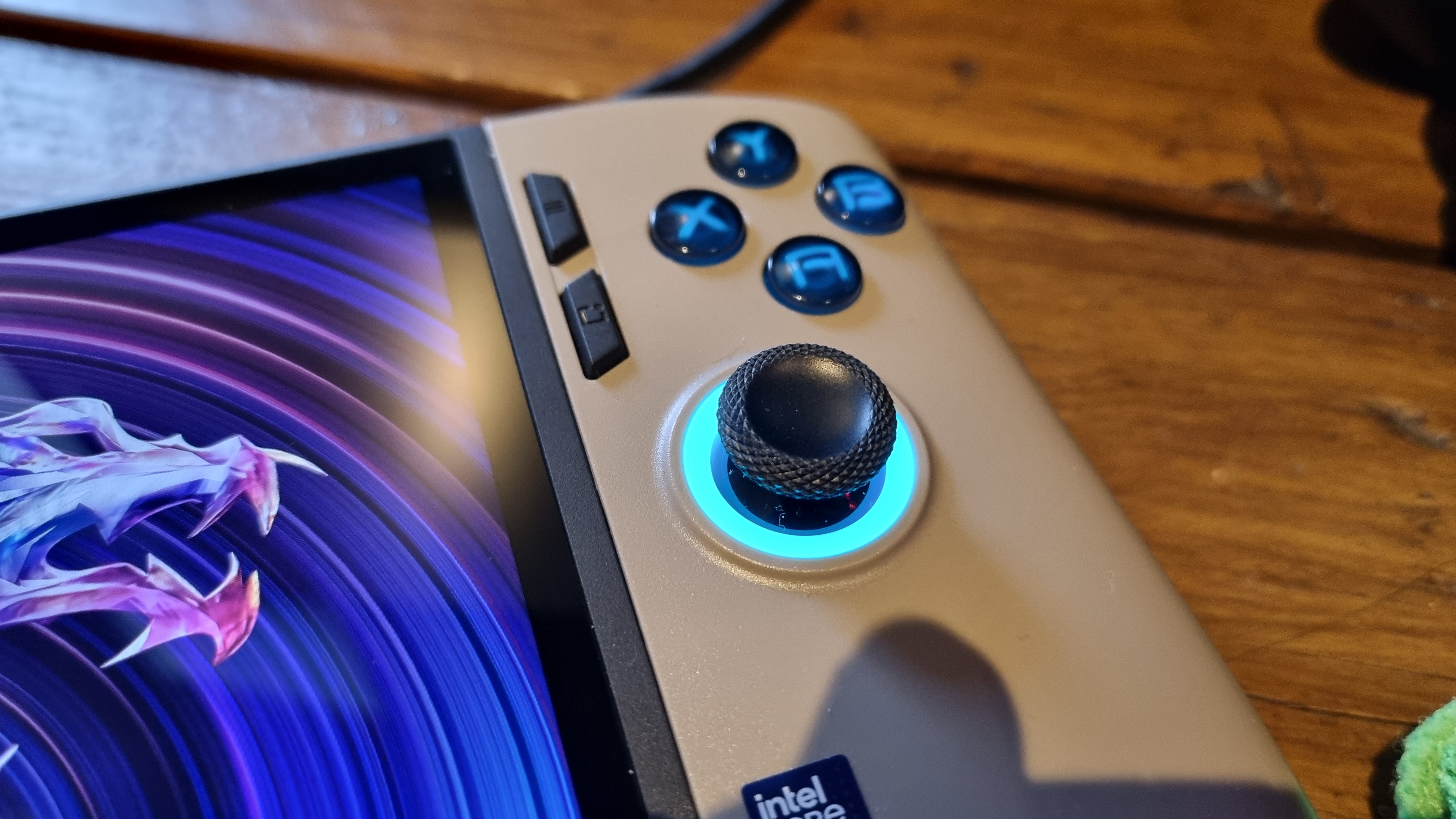
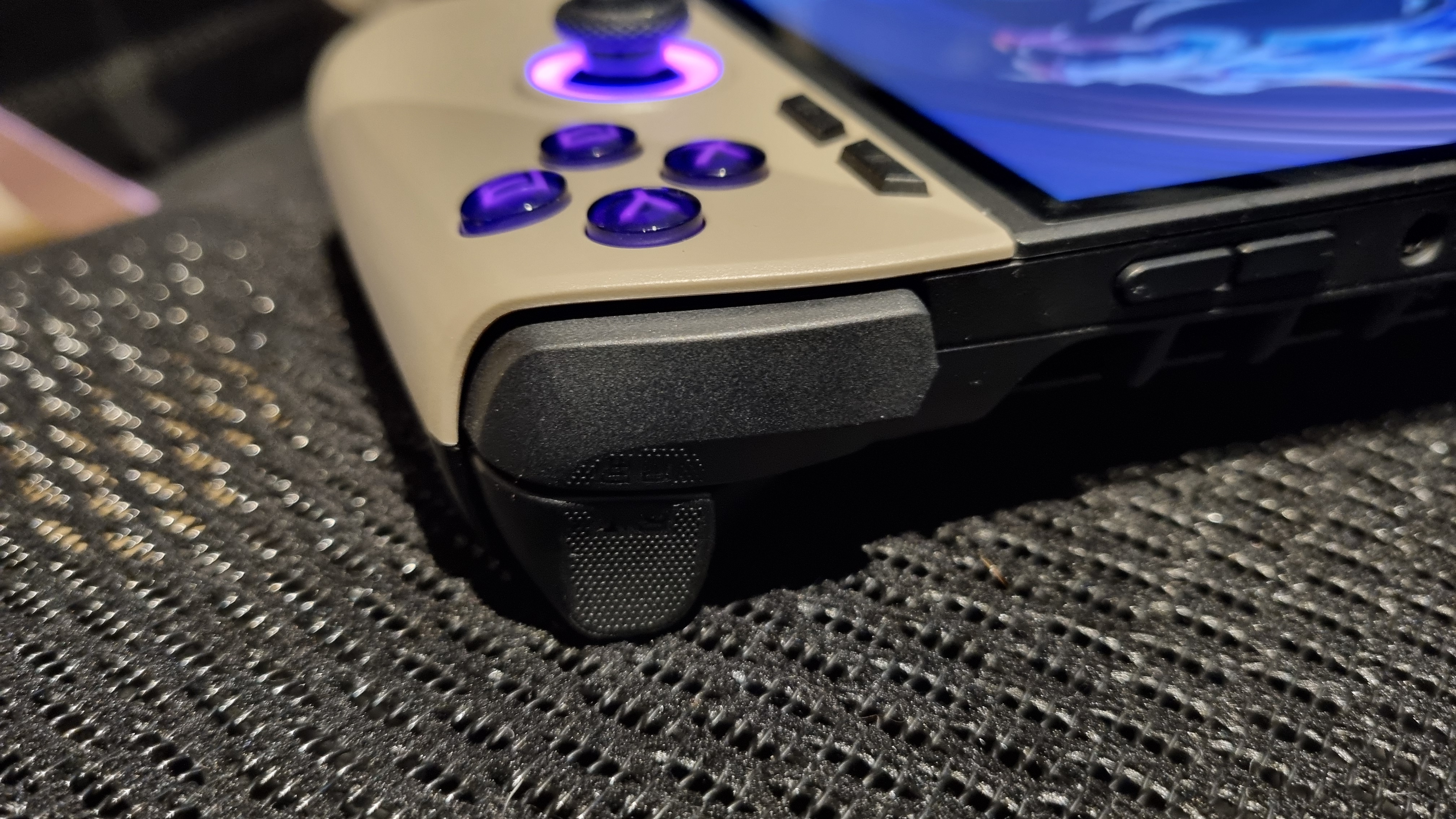
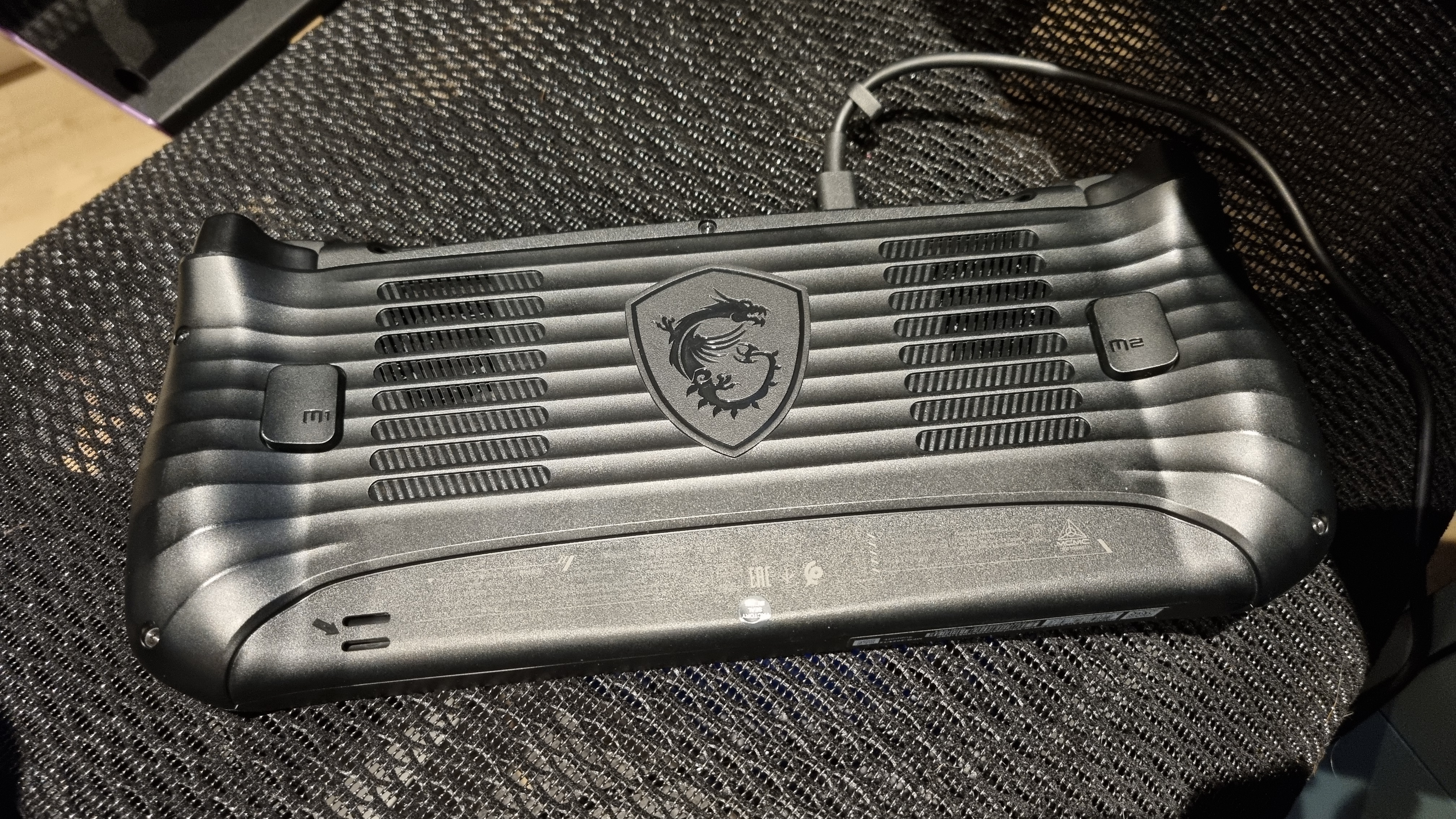
In a phrase? Pretty much, yes. While the Claw matches the ROG Ally X in Black Myth Wukong at Medium settings with upscaling disabled, once FSR is thrown into the fray it ranges ahead by a couple of frames, with a much higher minimum frame rate. It's also a mere two frames off the performance of the OneXFly F1 Pro, and that's pretty impressive given the price delta between them.
In Cyberpunk 2077 it actually manages to beat the OneXFly by a single average frame, both in the upscaled benchmark and at straight-up 1080p. That's a superb turn of speed, and a good indication that the Intel Core Ultra 7 285V is serious competition for the Ryzen AI HX 370 at the heart of the OneXPlayer machine.
And so the back and forth begins. In F1 24, the Claw 8 AI+ gives the ROG Ally X a bit of a pasting—particularly with upscaling enabled, where it manages a nine fps lead. However, the OneXFly F1 Pro flexes its muscles once more, beating the Claw by a fair margin in both the upscaled and non-upscaled results.
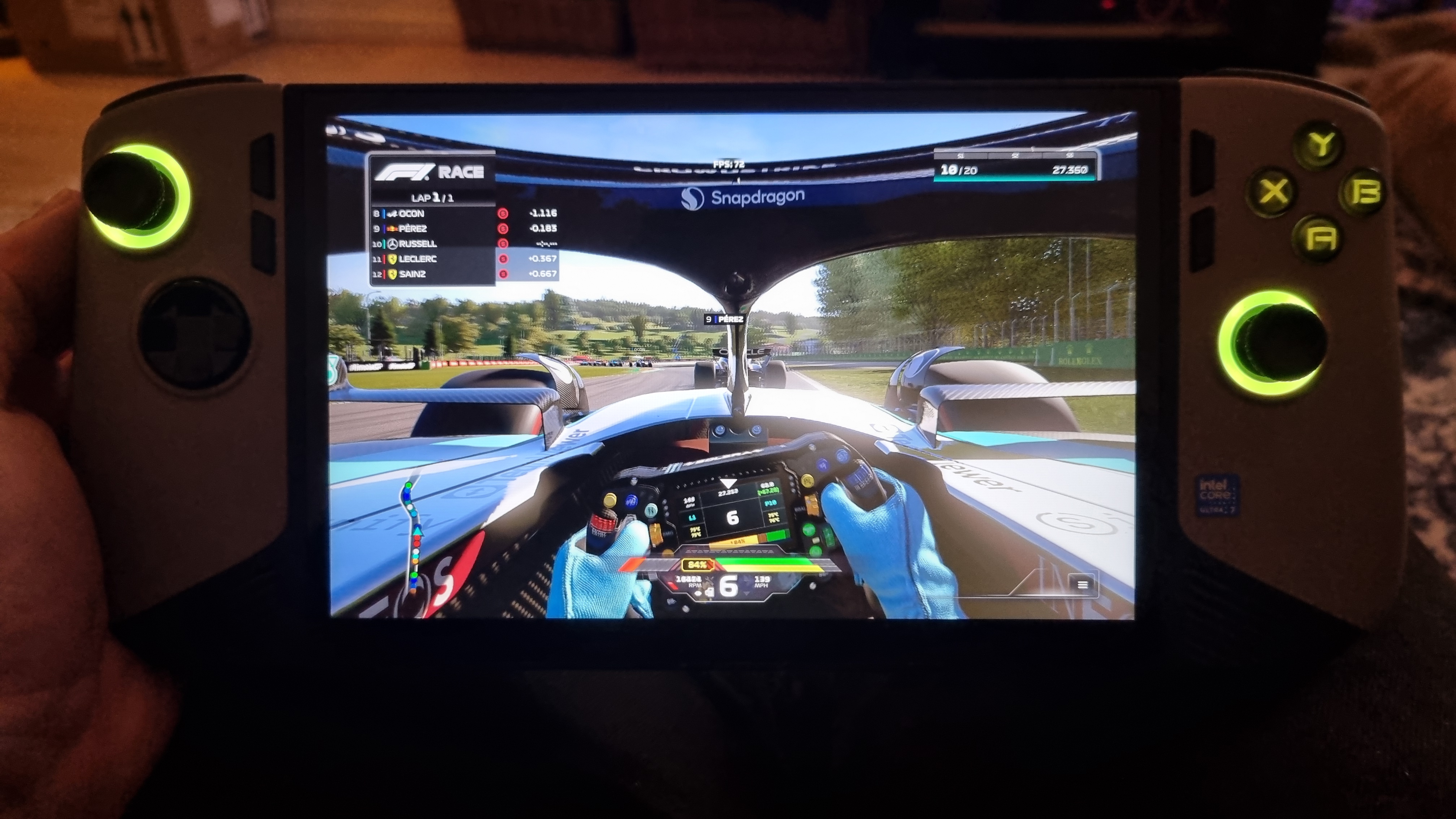
In Metro Exodus Enhanced, however, the Claw scythes its way to the top, leaving the ROG Ally X in the dust and edging ahead of the OneXFly by another single frame, with a four fps lead in the minimums.
One slightly odd result in my testing occurred in Horizon Zero Dawn. With upscaling disabled, the Claw leads the OneXFly machine by two frames on average, with double the minimum frame rate. However, with FSR set to Quality at 1080p it drops below all of our tested handhelds on average, although maintains a very high minimum figure compared to the rest.
I ran the benchmark over and over for hours and fiddled with many settings, but nope, this was a consistent quirk.
Intel drivers? Perhaps. It wouldn't be the first time we've experienced odd driver-related issues with an Intel GPU, although it's worth mentioning that all of the games in our test suite ran on the Claw without major problems, just with the very occasional performance oddity.
Speaking of quirks, how about that scorching high 3DMark Time Spy GPU score? Intel's Arc desktop cards have a habit of performing brilliantly in 3DMark benchmarks, while not translating those gains particularly well into actual games—and it seems the Arc 140V iGPU is the same. I'd look upon that number with a good bit of scepticism, but again, it was a consistent figure among multiple runs.
In terms of CPU score, it's worth noting that the Core Ultra 7 285V makes use of four Performance big boi CPU cores, and four low-powered Efficient cores. When compared to the eight fully-fledged cores in the Ryzen Z1 Extreme (and the four Zen 5 cores paired with eight Zen 5c cores in the Ryzen AI HX 370) it's no great surprise the Claw's CPU score is down on the competition.
This is reflected again in the Cinebench R24 results. While the single core index of the Intel chip is the highest out of our handhelds thanks to the speed of those Performance cores, the multi-core score pales in comparison to the AMD chips in the ROG Ally X and the OneXFly F1 Pro. Although it's worth mentioning it does manage a slightly higher result than the Lenovo Legion Go, also using the Ryzen Z1 Extreme APU.
Does this performance deficit matter? To me, no. This is a gaming handheld, after all, and real world gaming performance is where the Lunar Lake chip really delivers. While benchmarks will always drag out the best and worst of a chip, I can't see many people crying into their cereal about the lack of multi-core productivity performance in something designed primarily to play games on the go.
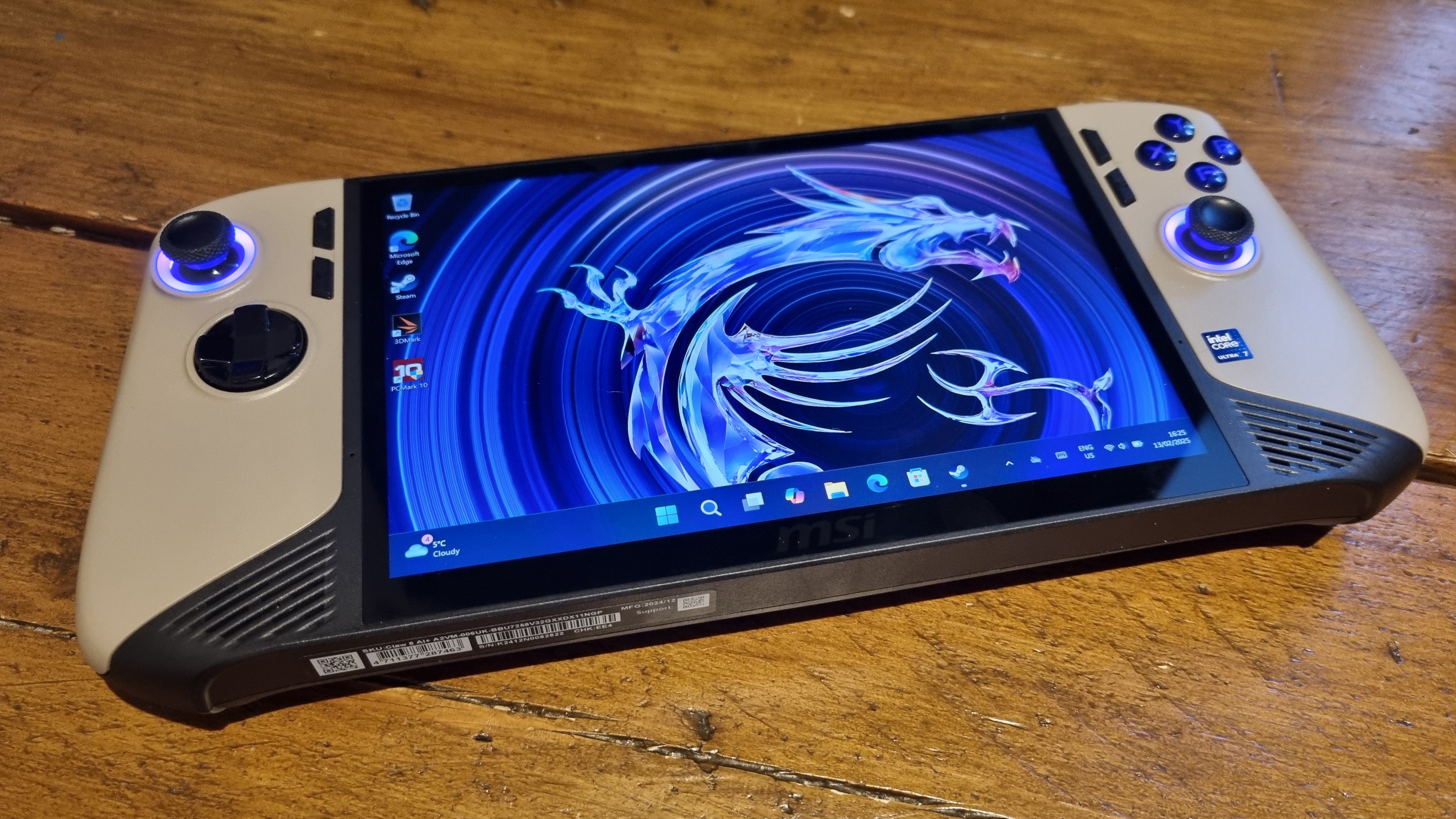
I re-benchmarked the ROG Ally X myself for the purposes of this comparison, as our handheld benchmarking suite has changed slightly since Nick's original review and I wanted the latest numbers. And while the Asus machine is fairly loud under load at its max 30 W TDP, the Claw 8 AI+ is surprisingly quiet, to the point where I wasn't sure if benchmarks had finished or not when it sat a few meters away.
It runs relatively cool, too, with a max CPU temp of 86 °C. That larger chassis appears to give the Lunar Lake chip plenty of breathing room, without being plastered in vents like the OG Claw.
Speaking of efficiency, the Claw 8 AI+ managed a massive 129 minutes in PCMark 10's gaming battery life test. That's a single minute more than the ROG Ally X, and nearly double the battery life of the OneXFly F1 Pro under load. That substantial casing has allowed MSI to cram an 80 Wh battery under the hood—and combined with the efficiency of Intel's impressive chip, the Claw keeps going, and going, and going.
This translates into my real world testing, too. I managed to play an hour and a half's worth of Doom 2016 at Ultra settings on my journey home from the office, with battery life to spare. And it ran like water.
Admittedly it's nearly a nine year old game, and wasn't particularly hardware-demanding even at release. But it was something of a revelation playing a still-fantastic-looking shooter on a large screen at very high frame rates—mid-train journey—without thinking once about a cable.
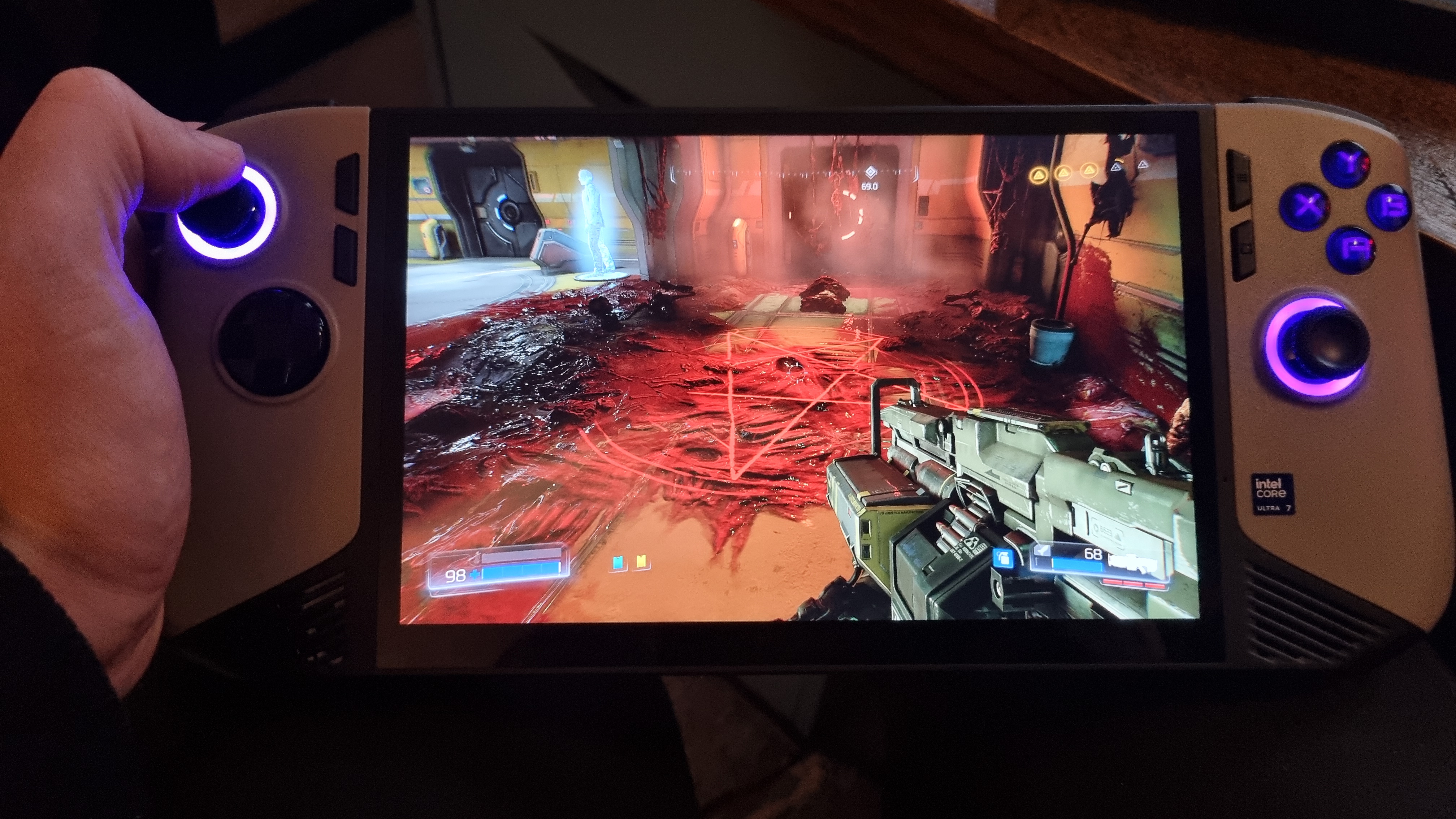
In fact I've been playing as many fast-paced games as I can on the Claw to test out those Hall effect thumbsticks and updated controls. The sticks are certainly accurate, and feel great under the thumbs for a long session. However, having the ROG Ally X to compare side-by-side, I have to say that the Asus machine's triggers, shoulder buttons, and face buttons do feel better.
It's a tolerance thing, perhaps, but the Asus simply feels more premium in my hands. The Claw's chassis and controls feel good, great even, but the ROG Ally X has a special quality to its moving parts that edges it ahead.
Think of it as a big, bruising, heavyweight boxer of a handheld gaming PC
So, for that matter, does the OnePlayerX OneXFly F1 Pro. It's not that the MSI feels bad, more that its direct competitors feel just a touch better in the materials and factory tolerances department.
Other issues? Well, MSI's M-Center software is pretty basic, and while the AI Engine feature is supposed to intelligently adjust performance on the fly depending on your use case, I'd advise turning it off and adjusting the power settings manually. It's fairly good at dropping TDP down on the move to save some battery, but it also managed to screw up the odd benchmark run while plugged in, which is disappointing.
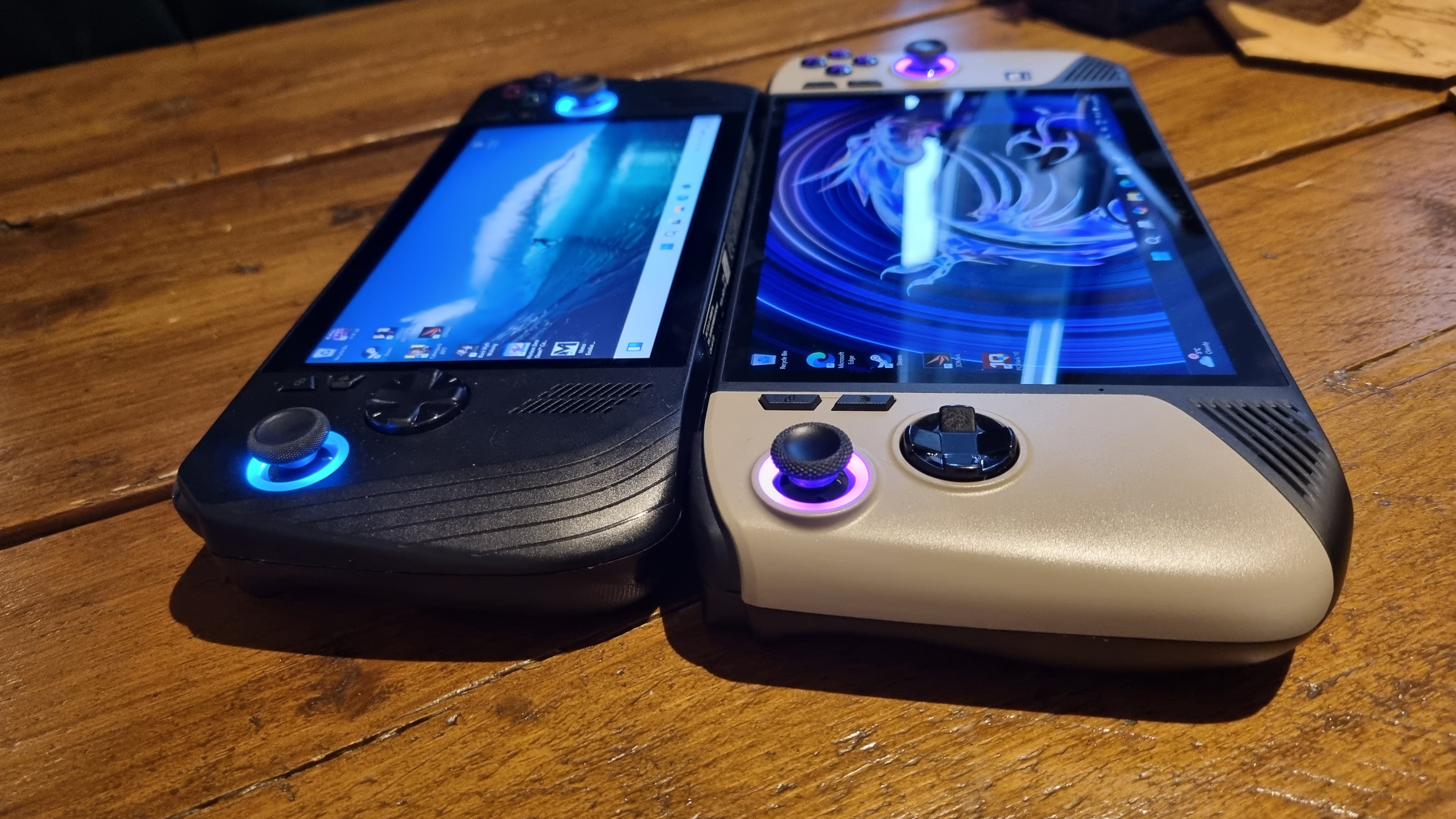
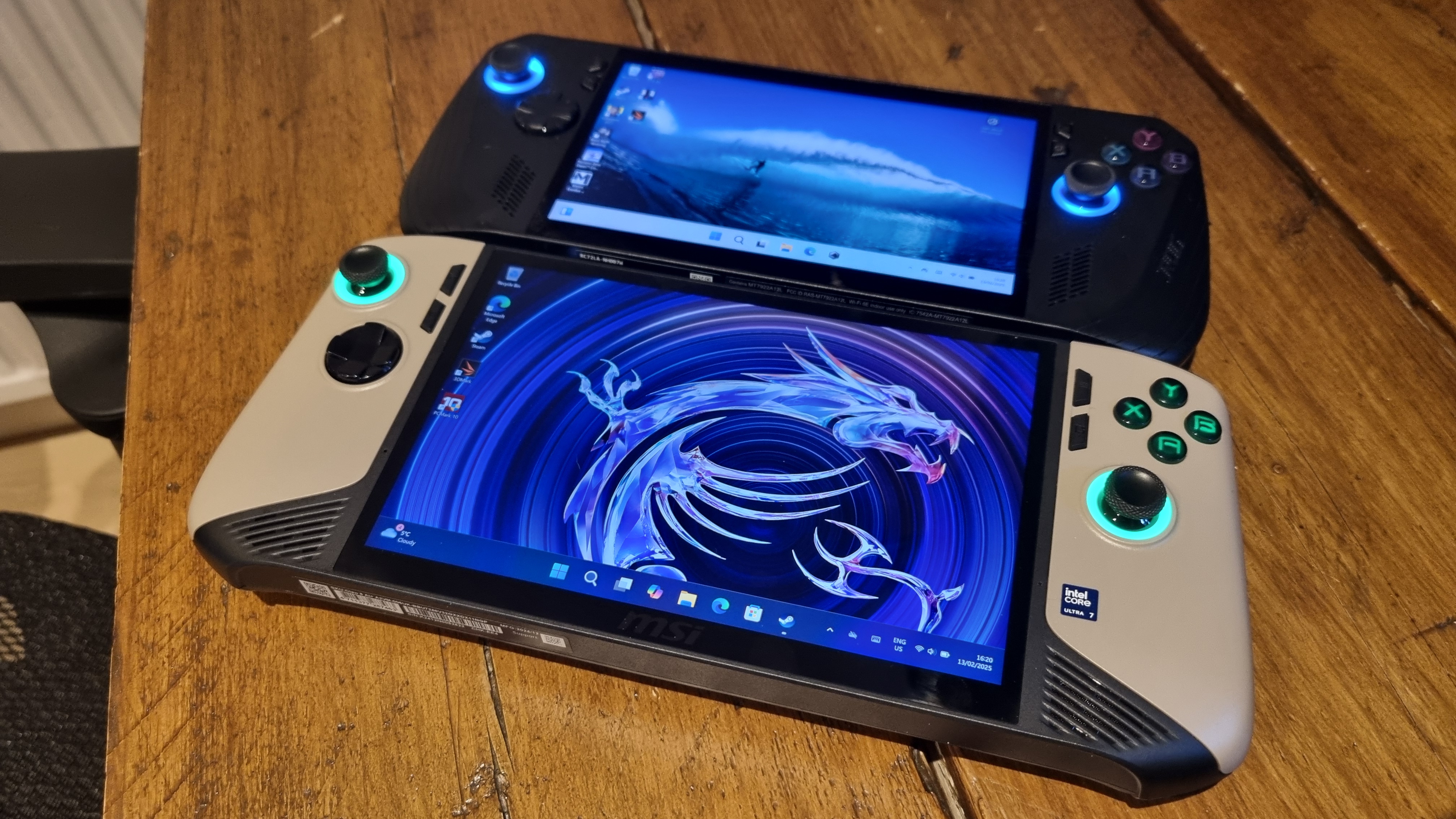
And again, sticking the Claw side by side with the Ally X, I do wonder whether I'd trade some of the Claw's advantages for portability. That big screen is a wonderful thing, but the ROG is just small enough where slinging it in your backpack requires no consideration, whereas the Claw is big enough to make you wonder whether you might leave it at home.
✅ You want superb performance for more reasonable money: The Claw 8 AI+ manages to rival and occasionally beat the fastest handheld on our books, for over $400 less.
✅ You like a big screen: The 8-inch display is a lovely thing to behold, and ups the immersion factor of handheld gaming significantly.
❌ You want ultra-portable: This is a chonky handheld device, and as a result it's not as easy to lug around with you as something more reasonably sized.
❌ You want class-leading controls: The Claw's buttons, triggers and paddles are a massive improvement on its predecessor—but its competitors still have the edge.
But I simply can't ignore what the Claw 8 AI+ provides for the cash. It delivers performance capable of giving the fastest handheld we've ever tested a run for its money, a large and vibrant display, good controls, and battery life that matches the notoriously long-lasting ROG Ally X. All for $900, which given the pricing of some of the competition, actually strikes as downright reasonable for what you end up receiving.
The thorny question is, does that mean the Claw should replace the Asus ROG Ally X as our best handheld gaming PC overall? To me, not quite. While the Claw beats the Ally X in many of our benchmarks, I think as an overall package, the Asus has it. Just. Really though, both of these handhelds have their place—and for very different reasons.
If you want portability, an ultra-premium feel, and good performance for the more competitive price of $800, I'd lean towards the Ally X. But if you don't mind paying $100 more for sheer raw power and a big screen, and can put up with it being a little unwieldy and slightly rougher around the edges? Yep, that's the Claw.
Think of it as a big, bruising, heavyweight boxer of a handheld gaming PC. It lacks the odd touch of refinement, sure, and occasionally wobbles on its feet. But it delivers such a whack, such a powerful punch of gaming performance and battery life combined with that big, luscious screen, it cannot be ruled out of the fight. It's not just better than the original Claw—it's easily one of the best handhelds I've used to date.
The Claw 8 AI+ might have the occasional wobble, but overall it's a handsome, solidly-built, and impressive handheld with a great screen and serious performance. It's quite the thing—and a massive improvement on its predecessor.

Andy built his first gaming PC at the tender age of 12, when IDE cables were a thing and high resolution wasn't—and he hasn't stopped since. Now working as a hardware writer for PC Gamer, Andy's been jumping around the world attending product launches and trade shows, all the while reviewing every bit of PC hardware he can get his hands on. You name it, if it's interesting hardware he'll write words about it, with opinions and everything.
